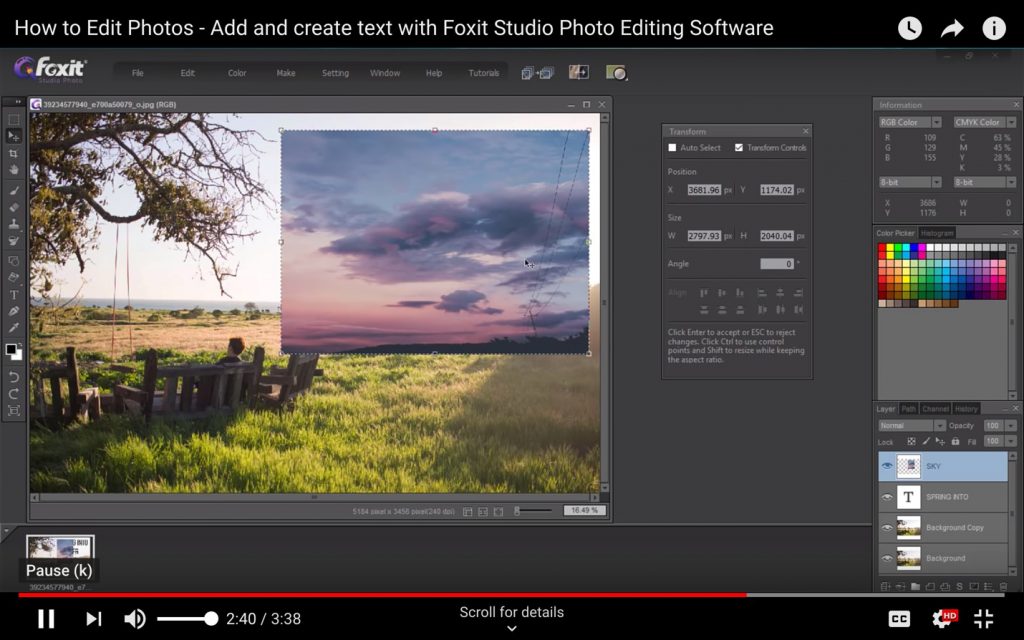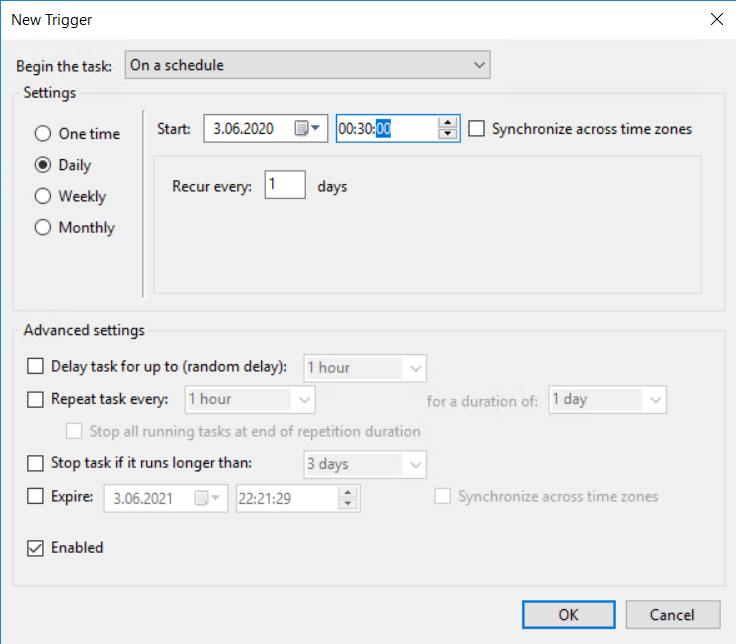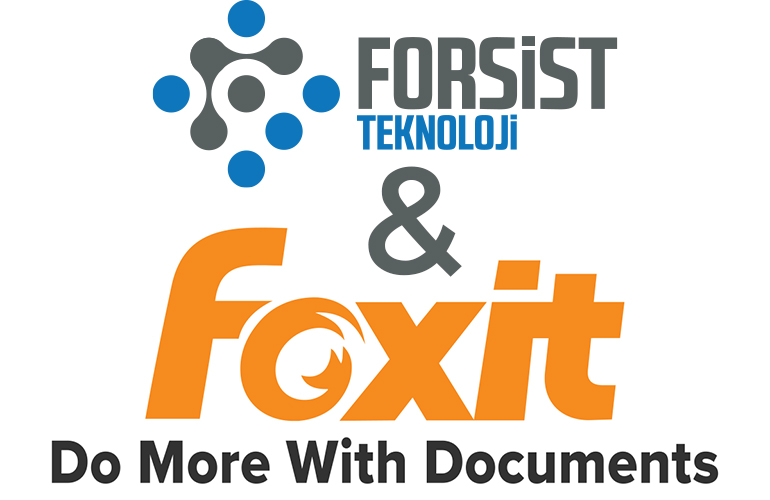0-9
#! — Shebang
/. — Slashdot
1GL — First-Generation Programming Language
1NF — First Normal Form
10B2 — 10BASE-2
10B5 — 10BASE-5
10B-F — 10BASE-F
10B-FB — 10BASE-FB
10B-FL — 10BASE-FL
10B-FP — 10BASE-FP
10B-T — 10BASE-T
100B-FX — 100BASE-FX
100B-T — 100BASE-T
100B-TX — 100BASE-TX
100BVG — 100BASE-VG
286 — Intel 80286 processor
2B1Q — 2 Binary 1 Quaternary
2FA — Two-factor authentication
2GL — Second-Generation Programming Language
2NF — Second Normal Form
3GL — Third-Generation Programming Language
3GPP — 3rd Generation Partnership Project—’3G comms
3GPP2 — 3rd Generation Partnership Project 2
3NF — Third Normal Form
386 — Intel 80386 processor
486 — Intel 80486 processor
4B5BLF — 4 Byte 5 Byte Local Fiber
4GL — Fourth-Generation Programming Language
4NF — Fourth Normal Form
5GL — Fifth-Generation Programming Language
5NF — Fifth Normal Form
6NF — Sixth Normal Form
8B10BLF — 8 Byte 10 Byte Local Fiber
802.11 — Wireless LAN
A
AAA – Authentication Authorization, Accounting
AABB – Axis Aligned Bounding Box
AAC – Advanced Audio Coding
AAL – ATM Adaptation Layer
AALC – ATM Adaptation Layer Connection
AARP – AppleTalk Address Resolution Protocol
ABAC – Attribute – Based Access Control
ABCL – Actor – Based Concurrent Language
ABI – Application Binary Interface
ABM – Asynchronous Balanced Mode
ABR – Area Border Router
ABR – Auto Baud – Rate detection
ABR – Available Bitrate
ABR – Average Bitrate
AC – Acoustic Coupler
AC – Alternating Current
ACD – Automatic Call Distributor
ACE – Advanced Computing Environment
ACID – Atomicity Consistency Isolation Durability
ACK – Acknowledgement
ACK – Amsterdam Compiler Kit
ACL – Access Control List
ACL – Active Current Loop
ACM – Association for Computing Machinery
ACME – Automated Classification of Medical Entities
ACP – Airline Control Program
ACPI – Advanced Configuration and Power Interface
ACR – Allowed Cell Rate
ACR – Attenuation to Crosstalk Ratio
AD – Active Directory
AD – Administrative Domain
ADAL – Active Directory Authentication Library
ADB – Apple Desktop Bus
ADC – Analog – to – Digital Converter
ADC – Apple Display Connector
ADCCP – Advanced Data Communications Control Procedures
ADO – ActiveX Data Objects
ADSL – Asymmetric Digital Subscriber Line
ADT – Abstract Data Type
AE – Adaptive Equalizer
AES – Advanced Encryption Standard
AF – Anisotropic Filtering
AFP – Apple Filing Protocol
AGP – Accelerated Graphics Port
AH – Active Hub
AI – Artificial Intelligence
AIX – Advanced Interactive eXecutive
Ajax – Asynchronous JavaScript and XML
AL – Access List
AL – Active Link
ALAC – Apple Lossless Audio Codec
ALGOL – Algorithmic Language
ALSA – Advanced Linux Sound Architecture
ALU – Arithmetic and Logical Unit
AM – Access Method
AM – Active Matrix
AM – Active Monitor
AM – Allied Mastercomputer
AM – Amplitude Modulation
AMD – Advanced Micro Devices
AMOLED – Active – Matrix Organic Light – Emitting Diode
AMQP – Advanced Message Queuing Protocol
AMR – Audio Modem Riser
ANN – Artificial Neural Network
ANSI – American National Standards Institute
ANT – Another Neat Tool
AoE – ATA over Ethernet
AOP – Aspect – Oriented Programming
APCI – Application – Layer Protocol Control Information
API – Application Programming Interface
APIC – Advanced Programmable Interrupt Controller
APIPA – Automatic Private IP Addressing
APL – A Programming Language
APR – Apache Portable Runtime
ARC – Adaptive Replacement Cache
ARC – Advanced RISC Computing
ARIN – American Registry for Internet Numbers
ARM – Advanced RISC Machines
AROS – AROS Research Operating System
ARP – Address Resolution Protocol
ARPA – Address and Routing Parameter Area
ARPA – Advanced Research Projects Agency
ARPANET – Advanced Research Projects Agency Network
AS – Access Server
ASCII – American Standard Code for Information Interchange
ASET – Automated Security Enhancement Tool
ASG – Abstract Semantic Graph
ASIC – Application – Specific Integrated Circuit
ASIMO – Advanced Step in Innovative Mobility
ASLR – Address Space Layout Randomization
ASM – Algorithmic State Machine
ASMP – Asymmetric Multiprocessing
ASN.1 – Abstract Syntax Notation 1
ASP – Active Server Pages
ASP – Application Service Provider
ASR – Asynchronous Signal Routine
AST – Abstract Syntax Tree
AT – Access Time
AT – Active Terminator
AT – Advanced Technology
ATA – Advanced Technology Attachment
ATAG – Authoring Tool Accessibility Guidelines
ATAPI – Advanced Technology Attachment Packet Interface
ATM – Asynchronous Transfer Mode
AuthIP – Authenticated Internet Protocol
AuthN – Authentication
AuthZ – Authorization
AV – Antivirus
AVC – Advanced Video Coding
AVI – Audio Video Interleaved
AWFL – Acronym With Four Letters
AWK – Aho Weinberger Kernighan
AWT – Abstract Window Toolkit
B
B2B – Business – to – Business
B2C – Business – to – Consumer
B2E – Business – to – Employee
BAL – Basic Assembly Language
BAM – Block Availability Map
Bash – Bourne – again shell
BASIC – Beginner’s All – Purpose Symbolic Instruction Code
BBP – Baseband Processor
BBS – Bulletin Board System
BC – Business Continuity
BCD – Binary Coded Decimal
BCD – Boot Configuration Data
BCNF – Boyce–Codd normal form
BEEP – Blocks Extensible Exchange Protocol
BER – Bit Error Rate
BFD – Bidirectional Forwarding Detection
BFD – Binary File Descriptor
BFS – Breadth – First Search
BFT – Byzantine Fault Tolerant
BGP – Border Gateway Protocol
BI – Business Intelligence
BINAC – Binary Automatic Computer
BIND – Berkeley Internet Name Domain
BIOS – Basic Input Output System
BiDi – Bi – Directional
bin – binary
bit – binary digit
BJT – Bipolar Junction Transistor
Blob – Binary large object
Blog – Web Log
BMP – Basic Multilingual Plane
BNC – Baby Neill Constant
BOINC – Berkeley Open Infrastructure for Network Computing
BOM – Byte Order Mark
BOOTP – Bootstrap Protocol
BPDU – Bridge Protocol Data Unit
BPEL – Business Process Execution Language
BPL – Broadband over Power Lines
BPM – Business Process Management
BPM – Business Process Modeling
bps – bits per second
BRM – Business Reference Model
BRMS – Business Rule Management System
BRR – Business Readiness Rating
BRS – Broadband Radio Service
BSA – Business Software Alliance
BSB – Backside Bus
BSD – Berkeley Software Distribution
BSoD – Blue Screen of Death
BSS – Basic service set (Wi-Fi)
BSS – Block Started by Symbol
B TAM – Basic Telecommunications Access Method
BT – BitTorrent
BT – Bluetooth
BW – Bandwidth
BYOD – Bring Your Own Device
Byte – By eight (group of 8 bits)
C
CA – Computer Accountancy
CAD – Computer – Aided Design
CAE – Computer – Aided Engineering
CAI – Computer – Aided Instruction
CAID – Computer – Aided Industrial Design
CAM – Computer – Aided Manufacturing
CAPTCHA – Completely Automated Public Turing Test to tell Computers and Humans Apart
CAQ – Computer – Aided Quality Assurance
CASE – Computer – Aided Software Engineering
CAT – Category (e.g. CAT-5 cable)
CAT – Computer – Aided Translation
cc – C Compiler
CD – Compact Disc
CD – R – CD – Recordable
CD – ROM – CD Read – Only Memory
CD – RW – CD – Rewritable
CDE – Common Desktop Environment
CDFS – Compact Disk File System
CDMA – Code Division Multiple Access
CDN – Content Delivery Network
CDP – Cisco Discovery Protocol
CDP – Continuous Data Protection
CDSA – Common Data Security Architecture
CERT – Computer Emergency Response Team
CES – Consumer Electronics Show
CF – Compact Flash
CFD – Computational Fluid Dynamics
CFG – Context – Free Grammar
CFG – Control Flow Graph
CG – Computer Graphics
CGA – Color Graphics Array
CGI – Common Gateway Interface
CGI – Computer – Generated Imagery
CGT – Computational Graph Theory
CHAP – Challenge – Handshake Authentication Protocol
CHS – Cylinder – Head – Sector
CIDR – Classless Inter – Domain Routing
CIFS – Common Internet Filesystem
CIM – Common Information Model
CIM – Computationally Independent Model
CIO – Chief Information Officer
CIR – Committed information rate
CISC – Complex Instruction Set Computer
CJK – Chinese, Japanese, and Korean
CJKV – Chinese, Japanese, Korean, and Vietnamese
CLI – Command Line Interface
CLI – Command line interpreter
CLR – Common Language Runtime
CM – Configuration Management
CM – Content Management
CMDB – Configuration Management Database
CMMI – Capability Maturity Model Integration
CMO – Current Mode of Operation
CMOS – Complementary Metal – Oxide Semiconductor
CMS – Content Management System
CN – Canonical Name
CN – Common Name
CNC – Computer Numerical Control
CNG – Cryptographic Next Generation
CNR – Communications and Networking Riser
COBOL – Common Business – Oriented Language
COM – Component Object Model or communication
CVS – Concurrent Versions System – Concurrent Versioning System|CVS
CORBA – Common Object Request Broker Architecture
COTS – Commercial Off – The – Shelf
CP/M – Control Program/Monitor
CPA – Cell Processor Architecture
CPAN – Comprehensive Perl Archive Network
CPE – Customer premises equipment
CPRI – Common Public Radio Interface
CPS – characters per second
CPU – Central Processing Unit
CR – Carriage Return
CRAN – Comprehensive R Archive Network
CRC – Cyclic Redundancy Check
CRLF – Carriage Return Line Feeds
CRM – Customer Relationship Management
CRS – Computer Reservations System
CRT – Cathode Ray Tube
CRUD – Create, Read, Update and Delete
CS – Cable Select
CS – Computer Science
CSE – Computer Science and Engineering
CSI – Common System Interface
CSM – Compatibility Support Module
CSMA/CA – Carrier sense multiple access / collision avoidance
CSMA/CD – Carrier sense multiple access / collision detection
CSP – Cloud Service Provider
CSP – Communicating Sequential Processes
CSRF – Cross – Site Request Forgery
CSS – Cascading Style Sheets
CSS – Closed Source Software
CSS – Content – Scrambling System
CSS – Cross – Site Scripting
CSU/DSU – Channel service unit / data service unit
CSV – Comma – Separated Values
CT – Computerized Tomography
CTAN – Comprehensive TeX Archive Network
CTCP – Client – To – Client Protocol
CTFE – Compile Time Function Execution
CTI – Computer Telephony Integration
CTL – Computational Tree Logic
CTM – Close To Metal
CTS – Clear To Send
CTSS – Compatible Time – Sharing System
CUA – Common User Access
CVS – Concurrent Versioning System
CX – Customer Experience
D
DAC – Digital – To – Analog Converter
DAC – Discretionary Access Control
DAL – Database Abstraction Layer
DAM – Database activity monitoring
DAM – Digital asset management
DAO – Data Access Object
DAO – Disk – At – Once
DAP – Directory Access Protocol
DAR – Direct Access Recovery
DARPA – Defense Advanced Research Projects Agency
DAS – Direct Attached Storage
DAT – Digital Audio Tape
DB – Database
DBA – Database Administrator
DBCS – Double Byte Character Set
DBMS – Database Management System
DCC – Direct Client – to – Client
DCCA – Debian Common Core Alliance
DCCP – Datagram Congestion Control Protocol
DCE – Data communications equipment
DCL – Data Control Language
DCMI – Dublin Core Metadata Initiative
DCOM – Distributed Component Object Model
DCS – Distributed Control System
DD – Double Density
DDE – Dynamic Data Exchange
DDI – DNS DHCP & IP Address management
DDL – Data Definition Language
DDoS – Distributed Denial of Service
DDR – Double Data Rate
DEC – Digital Equipment Corporation
DES – Data Encryption Standard
dev – development
DFA – Deterministic Finite Automaton
DFD – Data Flow Diagram
DFS – Depth – First Search
DFS – Distributed File System
DGD – Dworkin’s Game Driver
DHCP – Dynamic Host Configuration Protocol
DHTML – Dynamic Hypertext Markup Language
DIF – Data Integrity Field
DIMM – Dual Inline Memory Module
DIN – Deutsches Institut für Normung
DIP – Dual In – line Package
DISM – Deployment Image and Service Management Tool
DIVX – Digital Video Express
DKIM – Domain Keys Identified Mail
DL – Download
DLL – Dynamic Link Library
DLNA – Digital Living Network Alliance
DLP – Data loss protection
DMA – Direct Memory Access
DMCA – Digital Millennium Copyright Act
DMI – Direct Media Interface
DMI – Desktop Management Interface
DML – Data Manipulation Language
DML – Definitive Media Library
DMR – Dennis M. Ritchie
DMZ – Demilitarized Zone
DN – Distinguished Name
DND – Drag – and – Drop
DNS – Domain Name System
DOA – Dead on Arrival
DOCSIS – Data Over Cable Service Interface Specification
DOM – Document Object Model
DoS – Denial of Service
DOS – Disk Operating System
DP – Dot Pitch
DPC – Deferred Procedure Call
DPI – Deep Packet Inspection
DPI – Dots Per Inch
DPMI – DOS Protected Mode Interface
DPMS – Display Power Management Signaling
DR – Disaster Recovery
DR-DOS – Digital Research – Disk Operating System
DRAM – Dynamic Random – Access Memory
DRI – Direct Rendering Infrastructure
DRM – Digital Rights Management
DRM – Direct Rendering Manager
DSA – Digital Signature Algorithm
DSDL – Document Schema Definition Languages
DSDM – Dynamic Systems Development Method
DSKT – Desktop
DSL – Digital Subscriber Line
DSL – Domain – Specific Language
DSLAM – Digital Subscriber Line Access Multiplexer
DSN – Data Set Name
DSN – Database Source Name
DSP – Digital Signal Processor
DSSSL – Document Style Semantics and Specification Language
DTD – Document Type Definition
DTE – Data Terminal Equipment or data transfer rate
DTE – Data Terminal Equipment
DTP – Desktop Publishing
DTR – Data Terminal Ready or Data transfer rate
DVD – Digital Versatile Disc
DVD-R – DVD-Recordable
DVD-ROM – DVD-Read Only Memory
DVD-RW – DVD-Rewritable
DVI – Digital Visual Interface
DVR – Digital Video Recorder
DW – Data Warehouse
E
EAI – Enterprise Application Integration
EAP – Extensible Authentication Protocol
EAS – Exchange ActiveSync
EBCDIC – Extended Binary Coded Decimal Interchange Code
EBML – Extensible Binary Meta Language
ECC – Elliptic Curve Cryptography
ECMA – European Computer Manufacturers Association
ECN – Explicit Congestion Notification
ECOS – Embedded Configurable Operating System
ECRS – Expense and Cost Recovery System
EDA – Electronic Design Automation
EDGE – Enhanced Data rates for GSM Evolution
EDI – Electronic Data Interchange
EDO – Extended Data Out
EDSAC – Electronic Delay Storage Automatic Calculator
EDVAC – Electronic Discrete Variable Automatic Computer
EEPROM – Electronically Erasable Programmable Read – Only Memory
EFF – Electronic Frontier Foundation
EFI – Extensible Firmware Interface
EFM – Eight – to – Fourteen Modulation
EFM – Ethernet in the First Mile
EFS – Encrypting File System
EGA – Enhanced Graphics Array
EGP – Exterior Gateway Protocol
EHA – Ethernet Hardware Address (MAC address)
EIA – Electronics Industry Alliance
eID – electronic ID card
EIDE – Enhanced IDE
EIGRP – Enhanced Interior Gateway Routing Protocol
EISA – Extended Industry Standard Architecture
ELF – Executable and Linkable Format
ELF – Extremely Low Frequency
ELM – ELectronic Mail
EMACS – Editor MACroS
E-mail – Electronic mail
EMS – Expanded Memory Specification
ENIAC – Electronic Numerical Integrator And Computer
EOD – End of Day
EOF – End of File
EOF – End Of Frame
EOL – End of Life
EOL – End of Line
EOM – End Of Message
EOS – End of Support
EPIC – Explicitly Parallel Instruction Computing
EPROM – Erasable Programmable Read – Only Memory
ERD – Entity – Relationship Diagram
ERM – Entity – Relationship Model
ERP – Enterprise Resource Planning
eSATA – external SATA
ESB – Enterprise service bus
ESCON – Enterprise Systems Connection
ESD – Electrostatic Discharge
ESI – Electronically Stored Information
ESR – Eric Steven Raymond
ESS – Extended service set (Wi-Fi group)
ETA – Estimated Time of Arrival
ETL – Extract, Transform, Load
ETW – Event Tracing for Windows
EUC – Extended Unix Code
EULA – End User License Agreement
EWM – Enterprise Work Management
EWMH – Extended Window Manager Hints
EXT – EXTended file system
F
FAP – FORTRAN Assembly Program
FAQ – Frequently Asked Questions
FASM – Flat ASseMbler
FAT – File Allocation Table
FBDIMM – Fully Buffered Dual Inline Memory Module
FC – AL – Fibre Channel Arbitrated Loop
FCB – File Control Block
FCC – Federal Communications Commission
FCS – Frame Check Sequence
FCS – Frame check sequence (Ethernet)
FDC – Floppy Disk Controller
FDD – Floppy Disk Drive
FDD – Frequency – Division Duplexing
FDDI – Fiber Distributed Data Interface
FDM – Frequency – Division Multiplexing
FDMA – Frequency – Division Multiple Access
FDS – Fedora Directory Server
FEC – Forward Error Correction
FEMB – Front – End Motherboard
FET – Field Effect Transistor
FHS – Filesystem Hierarchy Standard
FICON – FIber CONnectivity
FIFO – First In First Out
FIPS – Federal Information Processing Standards
FL – Function Level
FLAC – Free Lossless Audio Codec
FLOPS – FLoating – Point Operations Per Second
FLOSS – Free/Libre/Open Source Software
FMC – Fixed Mobile Convergence “Mobile UC or Unified Communications over Wireless”
FMO – Future Mode of Operation
FOLDOC – Free On – line Dictionary of Computing
FOSDEM – Free and Open source Software Developers’ European Meeting
FOSI – Formatted Output Specification Instance
FOSS – Free and Open Source Software
FP – Function Programming
FPGA – Field Programmable Gate Array
FPS – Floating Point Systems
FPU – Floating Point Unit
FQDN – Fully Qualified Domain Name
FRU – Field Replaceable Unit
FS – File System
FSB – Front Side Bus
fsck – File System Check
FSF – Free Software Foundation
FSM – Finite State Machine
FTP – File Transfer Protocol
FTP – File Transfer Protocol
FTTA – Fiber To The Antenna
FTTC – Fiber To The Curb
FTTH – Fiber To The Home
FTTP – Fiber To The Premises
FUD – Fear Uncertainty Doubt
FVEK – Full Volume Encryption Key
FWS – Folding White Space
FXP – File eXchange Protocol
FYI – For Your Information
G
G11N – Globalization
Gas – GNU Assembler
Gb – Gigabit
GB – Gigabyte
GBIC – Gigabit interface converter
Gbps – Gigabit per second
GCC – GNU Compiler Collection
GCJ – GNU Compiler for Java
GCR – Group Coded Recording
GDB – GNU Debugger
GDI – Graphics Device Interface
GEPOF – Gigabit Ethernet (over) Plastic Optical Fiber
GERAN – GSM EDGE Radio Access Network
GFDL – GNU Free Documentation License
GIF – Graphics Interchange Format
GIGO – Garbage In, Garbage Out
GIMP – GNU Image Manipulation Program
GIMPS – Great Internet Mersenne Prime Search
GIS – Geographic Information System
GLUT – OpenGL Utility Toolkit
GML – Geography Markup Language
GNOME – GNU Network Object Model Environment
GNU – GNU’s Not Unix
GOMS – Goals, Operators, Methods, and Selection rules
GPASM – GNU PIC ASseMbler
GPFS – General Parallel File System
GPG – GNU Privacy Guard
GPGPU – General – Purpose Computing on Graphics Processing Units
GPIB – General – Purpose Instrumentation Bus
GPL – General – Purpose Language
GPL – General Public License
GPRS – General Packet Radio Service
GPT – GUID Partition Table
GPU – Graphics Processing Unit
GRUB – Grand Unified Boot – Loader
GSM – Global System for Mobile Communications
GTK+ – GIMP Toolkit
GUI – Graphical User Interface
GUID – Globally Unique IDentifier
GWT – Google Web Toolkit
GYR – IT Networking
H
HA – High Availability
HAL – Hardware Abstraction Layer
HARD – HTML Application Rapid Development
HASP – Houston Automatic Spooling Priority
HBA – Host Bus Adapter
HCI – Human Computer Interaction
HCL – Hardware Compatibility List
HD – High Density
HD DVD – High Definition DVD
HDD – Hard Disk Drive
HDL – Hardware Description Language
HDLC – High-level Data Link Control
HDMI – High – Definition Multimedia Interface
HECI – Host Embedded Controller Interface
HF – High Frequency
HFS – Hierarchical File System
HHD – Hybrid Hard Drive
HID – Human Interface Device
HIG – Human Interface Guidelines
HIRD – Hurd of Interfaces Representing Depth
HLASM – High Level ASseMbler
HLS – HTTP Live Streaming
HMA – High Memory Area
HP – Hewlett – Packard
HPC – High – Performance Computing
HPFS – High Performance File System
HSDPA – High – Speed Downlink Packet Access
HSM – Hierarchical Storage Management
HT – Hyper Threading
HTC – High – Throughput Computing
HTM – Hierarchical Temporal Memory
HTML – Hypertext Markup Language
HTTP – Hypertext Transfer Protocol
HTTP – HyperText Transfer Protocol
HTTPd – Hypertext Transport Protocol Daemon
HTTPS – HyperText Transfer Protocol Secure
HTX – HyperTransport eXpansion
HURD – Hird of Unix – Replacing Daemons
HVD – Holographic Versatile Disc
Hz – Hertz
I
I/O – Input/output
I18N – Internationalization
I²C – Inter – Integrated Circuit
I²S – Integrated Interchip Sound
IaaS – Infrastructure as a Service
IANA – Internet Assigned Numbers Authority
IBM – International Business Machines
IC – Integrated Circuit
ICaaS – Integration Capability as a Service
ICANN – Internet Corporation for Assigned Names and Numbers
ICE – In – Circuit Emulator
ICE – Intrusion Countermeasure Electronics
ICH – I/O Controller Hub
ICMP – Internet Control Message Protocol
ICP – Internet Cache Protocol
ICS – Internet Connection Sharing
ICT – Information and Communication Technology
IDE – Integrated Development Environment
IDE – Integrated Drive Electronics
IDF – Intermediate Data Format
IDF – Intermediate Distribution Frame
IDL – Interactive Data Language
IDL – Interface Definition Language
IDS – Intrusion Detection System
IE – Internet Explorer
IEC – International Electrotechnical Commission
IEEE – Institute of Electrical and Electronics Engineers
IETF – Internet Engineering Task Force
IFGICT – International Federation of Global & Green ICT
IFL – Integrated Facility for Linux
IGMP – Internet Group Management Protocol
IGRP – Interior Gateway Routing Protocol
IHV – Independent Hardware Vendor
IIOP – Internet Inter – Orb Protocol
IIS – Internet Information Services
IKE – Internet Key Exchange
IL – Intermediate Language
IM – Instant Messaging
IMAP – Internet Message Access Protocol
IME – Input Method Editor
IMR – Internet Monthly Report
INFOSEC – Information Systems Security
IoT – Internet of Things
IP – Intellectual Property
IP – Internet Protocol
IPAM – IP Address Management
IPC – Inter – Process Communication
IPL – Initial Program Load
IPMI – Intelligent Platform Management Interface
IPO – Inter Procedural Optimization
IPP – Internet Printing Protocol
IPS – In-Plane Switching
IPS – Instructions Per Second
IPS – Intrusion Prevention System
IPsec – Internet Protocol security
IPTV – Internet Protocol Television
IPv4 – Internet Protocol version 4
IPv6 – Internet Protocol version 6
IPX – Internetwork Packet Exchange
IR – Intermediate Representation
IRC – Internet Relay Chat
IrDA – Infrared Data Association
IRI – Internationalized Resource Identifier
IRP – I/O Request Packet
IRQ – Interrupt Request
IS – Information Systems
IS – IS – Intermediate System to Intermediate System
ISA – Industry Standard Architecture
ISA – Instruction Set Architecture
ISAM – Indexed Sequential Access Method
ISATAP – Intra – Site Automatic Tunnel Addressing Protocol
ISC – Internet Storm Center
ISDN – Integrated Services Digital Network
IS-IS – Intermediate System to Intermediate System
ISO – International Organization for Standardization
ISP – Internet Service Provider
ISPF – Interactive System Productivity Facility
ISR – Interrupt Service Routine
ISV – Independent Software Vendor
IT – Information Technology
ITIL – Information Technology Infrastructure Library
ITL – Interval Temporal Logic
ITU – International Telecommunication Union
ITU-T – International Telecommunications Union
IVCR – Interactive Virtual Classroom
IVRS – Interactive Voice Response System
iBCS – Intel Binary Compatibility Standard
iSCSI – Internet Small Computer System Interface
iSNS – Internet Storage Name Service
J
J2EE – Java 2 Enterprise Edition
J2ME – Java 2 Micro Edition
J2SE – Java 2 Standard Edition
JAX – RPC – Java XML for Remote Procedure Calls
JAXB – Java Architecture for XML Binding
JAXP – Java API for XML Processing
JBOD – Just a Bunch of Disks
JCE – Java Cryptography Extension
JCL – Job Control Language
JCP – Java Community Process
JDBC – Java Database Connectivity
JDK – Java Development Kit
JDS – Java Desktop System
JEE – Java Enterprise Edition
JES – Job Entry Subsystem
JFC – Java Foundation Classes
JFET – Junction Field – Effect Transistor
JFS – IBM Journaling File System
JINI – Jini Is Not Initials
JIT – Just – In – Time
JME – Java Micro Edition
JMS – Java Message Service
JMX – Java Management Extensions
JNDI – Java Naming and Directory Interface
JNI – Java Native Interface
JNZ – Jump non – zero
JPEG – Joint Photographic Experts Group
JRE – Java Runtime Environment
JS – JavaScript
JSE – Java Standard Edition
JSON – JavaScript Object Notation
JSP – Jackson Structured Programming
JSP – JavaServer Pages
JTAG – Joint Test Action Group
JUG – Java Users Group
JVM – Java Virtual Machine
K
K&R – Kernighan and Ritchie
KB – Keyboard
Kb – Kilobit
KB – Kilobyte
KB – Knowledge Base
Kbps – Kilobit per second
KDE – K Desktop Environment
kHz – Kilohertz
KiB – Kibibyte
KM – Knowledge Machine
KRL – Knowledge Representation Language
KVM – Keyboard, Video, Mouse
L
L10N – Localization
L2TP – Layer two Tunneling Protocol
LACP – Link Aggregation Control Protocol
LACP – Link Aggregation Control Protocol
LAMP – Linux Apache MySQL Perl
LAMP – Linux Apache MySQL PHP
LAMP – Linux Apache MySQL Python
LAN – Local Area Network
LAPB – Link Access Procedure, Balanced
LAPF – Link-access procedure for frame relay
LB – Load Balancer
LBA – Logical Block Addressing
LCD – Liquid Crystal Display
LCOS – Liquid Crystal On Silicon
LCR – Least Cost Routing
LDAP – Lightweight Directory Access Protocol
LE – Logical Extents
LED – Light – Emitting Diode
LF – Line Feed
LF – Low Frequency
LFS – Linux From Scratch
LGA – Land Grid Array
LGPL – Lesser General Public License
LIB – LIBrary
LIF – Low Insertion Force
LIFO – Last In First Out
LILO – Linux Loader
LIP – Loop Initialization Primitive
LISP – LISt Processing
LKML – Linux Kernel Mailing List
LLC – Logical link control
LM – Lan Manager
LOC – Lines of Code
LPC – Lars Pensjö C
LPI – Linux Professional Institute
LPT – Line Print Terminal
LRU – Least Recently Used
LSB – Least Significant Bit
LSB – Linux Standard Base
LSI – Large – Scale Integration
LTE – Long Term Evolution
LTL – Linear Temporal Logic
LTR – Left-to-Right
LUG – Linux User Group
LUN – Logical Unit Number
LV – Logical Volume
LVD – Low Voltage Differential
LVM – Logical Volume Management
LZW – Lempel – Ziv – Welch
M
MAC – Mandatory Access
MAC – Media Access Control
MAM – Media access management
MAN – Metropolitan Area Network
MANET – Mobile Ad – Hoc Network
MAPI – Messaging Application Programming Interface
Mb – Megabit
MB – Megabyte
MBCS – Multi Byte Character Set
MBD – Model – Based Design
Mbps – Megabits per second
MBR – Master Boot Record
MC – Multiple Choice
MCA – Micro Channel Architecture
MCA – Microsoft Certified Architect
MCAD – Microsoft Certified Application Developer
MCAS – Microsoft Certified Application Specialist
MCDBA – Microsoft Certified DataBase Administrator
MCDST – Microsoft Certified Desktop Support Technician
MCITP – Microsoft Certified Information Technology Professional
MCM – Microsoft Certified Master
MCP – Microsoft Certified Professional
MCPC – Multiple Channels Per Carrier
MCPD – Microsoft Certified Professional Developer
MCSA – Microsoft Certified Systems Administrator
MCSD – Microsoft Certified Solution Developer
MCSE – Microsoft Certified Systems Engineer
MCT – Microsoft Certified Trainer
MCTS – Microsoft Certified Technology Specialist
MDA – Mail Delivery Agent
MDA – Model – Driven Architecture
MDA – Monochrome Display Adapter
MDD/MDSD – Model – Driven (Software) Development
MDF – Main Distribution Frame
MDI – Multiple Document Interface
ME – [Windows] Millennium Edition
ME – Microsoft Edge
MF – Medium Frequency
MFA – Multi-Factor Authentication
MFC – Microsoft Foundation Classes
MFM – Modified Frequency Modulation
MGCP – Media Gateway Control Protocol
MHz – Megahertz
MIB – Management Information Base
MICR – Magnetic Ink Character Recognition
MIDI – Musical Instrument Digital Interface
MIMD – Multiple Instruction, Multiple Data
MIME – Multipurpose Internet Mail Extensions
MIMO – Multiple – Input Multiple – Output
MINIX – MIni – uNIX
MIPS – Microprocessor without Interlocked Pipeline Stages
MIPS – Million Instructions Per Second
MIS – Management Information Systems
MISD – Multiple Instruction, Single Data
MIT – Massachusetts Institute of Technology
MMC – Microsoft Management Console
MMDS – Mortality Medical Data System
MMDS – Multichannel Multipoint Distribution Service
MMF – Multi – Mode (optical) Fiber
MMI – Man Machine Interface.
MMIO – Memory – Mapped I/O
MMORPG – Massively Multiplayer Online Role – Playing Game
MMU – Memory Management Unit
MMX – Multi – Media Extensions
MNG – Multiple – image Network Graphics
MoBo – Motherboard
MoCA – Multimedia over Coax Alliance
MOM – Message – Oriented Middleware
MOO – MUD Object Oriented
MOP – Meta – Object Protocol
MOS – Microsoft Office Specialist
MOSFET – Metal – Oxide Semiconductor Field Effect Transistor
MOTD – Message Of The Day
MOUS – Microsoft Office User Specialist
MOV – Apple QuickTime Multimedia File
MPAA – Motion Picture Association of America
MPEG – Motion Pictures Experts Group
MPL – Mozilla Public License
MPLS – Multiprotocol Label Switching
MPLS – Multiprotocol Label Switching
MPU – Microprocessor Unit
MS-DOS – Microsoft DOS
MS – Memory Stick
MS – Microsoft
MSA – Mail Submission Agent
MSB – Most Significant Bit
MSDN – Microsoft Developer Network
MSI – Medium – Scale Integration
MSI – Message Signaled Interrupt
MSI – Microsoft Installer
MSN – Microsoft Network
MT – Machine Translation
MTA – Mail Transfer Agent
MTA – Microsoft Technology Associate
MTBF – Mean Time Between Failures
MTU – Maximum Transmission Unit
MU – Memory Unit
MUA – Mail User Agent
MUD – Multi – User Dungeon
MVC – Model – View – Controller
MVP – Most Valuable Professional
MVS – Multiple Virtual Storage
MWC – Mobile World Congress
MX – Mail Exchange
MXF – Material Exchange Format
N
NAC – Network access control
NACK – Negative ACKnowledgement
NAK – Negative AcKnowledge Character
NaN – Not a Number
NAP – Network Access Protection
NAS – Network – Attached Storage
NASM – Netwide ASseMbler
NAT – Network Address Translation
NAT – Network Address Translation
NBMA – Non-Broadcast Multiple Access
NCP – NetWare Core Protocol
NCQ – Native Command Queuing
NCSA – National Center for Supercomputing Applications
NDIS – Network Driver Interface Specification
NDPS – Novell Distributed Print Services
NDS – Novell Directory Services
NEP – Network Equipment Provider
NetBIOS – Network Basic Input/Output System
NetBT – NetBIOS over TCP/IP
NEXT – Near – End CrossTalk
NFA – Nondeterministic Finite Automaton
NFC – Near field communication
NFS – Network File System
NGL – aNGeL
NGSCB – Next – Generation Secure Computing Base
NI – National Instruments
NIC – Network Interface Controller
NIC – Network Interface Card
NIM – No Internal Message
NIO – Non – blocking I/O
NIST – National Institute of Standards and Technology
NLP – Natural Language Processing
NLS – Native Language Support
NMI – Non – Maskable Interrupt
NNTP – Network News Transfer Protocol
NOC – Network Operations Center
NOP – No OPeration
NOS – Network Operating System
NP – Nondeterministic Polynomial time
NPL – Netscape Public License
NPTL – Native POSIX Thread Library
NPU – Network Processing Unit
NRZ – Non-return-to-zero
NRZI – Non-return to zero inverted
NS – Netscape
NSA – Network Security Appliance
NSI – Network Service Interface
NSPR – Netscape Portable Runtime
NSS – Name Service Switch
NSS – Network Security Services
NSS – Novell Storage Service
NT – New Technology
NTFS – NT Filesystem
NTLM – NT Lan Manager
NTP – Network Time Protocol
NUMA – Non – Uniform Memory Access
NURBS – Non – Uniform Rational B – Spline
NVR – Network Video Recorder
NVRAM – Non – Volatile Random Access Memory
O
OASIS – Organization for the Advancement of Structured Information Standards
OAT – Operational Acceptance Testing
OBSAI – Open Base Station Architecture Initiative
ODBC – Open Database Connectivity
OEM – Original Equipment Manufacturer
OES – Open Enterprise Server
OFDM – Orthogonal Frequency Division Multiplexing
OFTC – Open and Free Technology Community
OID – Object Identifier
OLAP – Online Analytical Processing
OLE – Object Linking and Embedding
OLED – Organic Light Emitting Diode
OLPC – One Laptop per Child
OLTP – Online Transaction Processing
OMF – Object Module Format
OMG – Object Management Group
OMR – Optical Mark Reader
OO – Object-Oriented
OO – OpenOffice
OOE – Out-of-Order Execution
OOM – Out Of Memory
OOo – OpenOffice.org
OoOE – Out-of-Order Execution
OOP – Object – Oriented Programming
OOTB – Out of the box
OPML – Outline Processor Markup Language
ORB – Object Request Broker
ORM – Object – Relational Mapping
OS – Open Source
OS – Operating System
OSCON – O’Reilly Open Source CONvention
OSDN – Open Source Development Network
OSI – Open Source Initiative
OSI – Open Systems Interconnection
OSI – Open System Interconnect (joint ISO and ITU standard)
OSPF – Open Shortest Path First
OSS – Open-Source Software
OSS – Open Sound System
OSS – Operations Support System
OSTG – Open Source Technology Group
OUI – Organization Unique Identifier
P
P2P – Peer-To-Peer
PaaS – Platform as a Service
PAN – Personal Area Network
PAP – Password Authentication Protocol
PARC – Palo Alto Research Center
PAT – Port address translation
PATA – Parallel ATA
PBS – Portable Batch System
PC – Personal Computer
PC DOS – Personal Computer Disk Operating System
PC – Personal computer (host)
PCB – Printed Circuit Board
PCB – Process Control Block
PCI – Peripheral Component Interconnect
PCI – X – PCI Extended
PCIe – PCI Express
PCL – Printer Command Language
PCM – Pulse – Code Modulation
PCM – Pulse-code modulation
PCMCIA – Personal Computer Memory Card International Association
PCRE – Perl Compatible Regular Expressions
PD – Public Domain
PDA – Personal Digital Assistant
PDF – Portable Document Format
PDH – Plesiochronous Digital Hierarchy
PDP – Programmed Data Processor
PDU – Protocol data unit (such as segment, packet, frame, etc.)
PE – Physical Extents
PERL – Practical Extraction and Reporting Language
PFA – Please Find Attachment
PG – Peripheral Gateway
PGA – Pin Grid Array
PGA – Programmable Gate Array
PGO – Profile – Guided Optimization
PGP – Pretty Good Privacy
PHP – Hypertext Preprocessor
PIC – Peripheral Interface Controller
PIC – Programmable Interrupt Controller
PID – Process ID
PID – Proportional – Integral – Derivative
PIM – Personal Information Manager
PIM – Platform Independent Model
PIM – Personal information manager
PIM – Privileged Identity Management
PINE – Program for Internet News and Email
PIO – Programmed Input/Output
PKCS – Public Key Cryptography Standards
PKI – Public Key Infrastructure
PL/I – Programming Language One
PL/M – Programming Language for Microcomputers
PL/P – Programming Language for Prime
PLC – Power Line Communication
PLC – Programmable Logic Controller
PLD – Programmable Logic Device
PLT – Power Line Telecommunications
PMM – POST Memory Manager
PNG – Portable Network Graphics
PnP – Plug – and – Play
PNRP – Peer Name Resolution Protocol
PoE – Power over Ethernet
POID – Persistent Object Identifier
POJO – Plain Old Java Object
POP – Point of Presence
POP3 – Post Office Protocol v3
POSIX – Portable Operating System Interface, formerly IEEE – IX
POST – Power – On Self Test
POTS – Plain old telephone service
PPC – PowerPC
PPI – Pixels Per Inch
PPP – Point-to-Point Protocol
PPPoA – PPP over ATM
PPPoE – PPP over Ethernet
PPTP – Point-to-Point Tunneling Protocol
PR – Pull Request
PS – PostScript
PS/2 – Personal System/2
PSA – Professional Services Automation
PSM – Platform Specific Model
PSU – Power Supply Unit
PSVI – Post – Schema – Validation Infoset
PTS – DOS – PhysTechSoft – Disk Operating System
PTT – Public Telephone and Telegraph
PV – Physical Volume
PVG – Physical Volume Group
PVR – Personal Video Recorder
PVST – Per-VLAN Spanning Tree
PXE – Preboot Execution Environment
PXI – PCI eXtensions for Instrumentation
Q
QA – Quality Assurance
QDR – Quad Data Rate
QFP – Quad Flat Package
QoS – Quality of Service
QOTD – Quote of the Day
QSOP – Quarter Small Outline Package
Qt – Quasar Toolkit
QTAM – Queued Teleprocessing Access Method
qWave – Quality Windows Audio/Video Experience
R
RACF – Resource Access Control Facility
RAD – Rapid Application Development
RADIUS – Remote Authentication Dial In User Service
RAID – Redundant Array of Independent Disks
RAII – Resource Acquisition Is Initialization
RAIT – Redundant Array of Inexpensive Tapes
RAM – Random Access Memory
RARP – Reverse Address Resolution Protocol
RAS – Reliability, Availability and Serviceability
RAS – Remote access service
RC – Region Code
RC – Release Candidate
RC – Run Commands
RCA – Root Cause Analysis
RCP – Royal College of Physicians
RCS – Revision Control System
RD – Remote Desktop
rd – remove directory
RDBMS – Relational Database Management System
RDC – Remote Desktop Connection
RDF – Resource Description Framework
RDM – Relational Data Model
RDOS – Real – time Disk Operating System
RDP – Remote Desktop Protocol
RDS – Remote Data Services
REFAL – Recursive Functions Algorithmic Language
regex – Regular Expression
regexp – Regular Expression
REP – RAID Error Propagation
REST – Representational State Transfer
RF – Radio Frequency
RFC – Request For Comments
RFC – Request for Comments
RFI – Radio Frequency Interference
RFID – Radio Frequency Identification
RGB – Red, Green, Blue
RGBA – Red, Green, Blue, Alpha
RHEL – Red Hat Enterprise Linux
RHL – Red Hat Linux
RIA – Rich Internet Application
RIAA – Recording Industry Association of America
RIP – Raster Image Processor
RIP – Routing Information Protocol
RIR – Regional Internet registry
RISC – Reduced Instruction Set Computer
RISC OS – Reduced Instruction Set Computer Operating System
RJE – Remote Job Entry
RLE – Run – Length Encoding
RLL – Run – Length Limited
rmdir – remove directory
RMI – Remote Method Invocation
RMS – Richard Matthew Stallman
ROM – DOS – Read Only Memory – Disk Operating System
ROM – Read Only Memory
ROMB – Read – Out Motherboard
RPC – Remote Procedure Call
RPG – Report Program Generator
RPM – RPM Package Manager
RRAS – Routing and Remote Access Service
RSA – Rivest Shamir Adleman
RSI – Repetitive Strain Injury
RSS – Radio Service Software
RSS – Rich Site Summary, RDF Site Summary, or Really Simple Syndication
RSTP – Rapid Spanning Tree Protocol
RTAI – Real – Time Application Interface
RTC – Real – Time Clock
RTE – Real – Time Enterprise
RTEMS – Real – Time Executive for Multiprocessor Systems
RTL – Right-to-Left
RTMP – Real Time Messaging Protocol
RTOS – Real – Time Operating System
RTP – Real-time Transport Protocol
RTS – Ready To Send
RTSP – Real Time Streaming Protocol
RTTI – Run – time Type Information
RWD – Responsive Web Design
S
S/MIME – Secure/Multipurpose Internet Mail Extensions
SaaS – Software as a Service
SAM – Security Account Manager
SAN – Storage Area Network
SAS – Serial attached SCSI
SASS – Syntatically Awesome Style Sheets
SATA – Serial ATA
SAX – Simple API for XML
sbin – superuser binary
SBOD – Spinning Beachball of Death
SBP – 2 – Serial Bus Protocol 2
sbs – Small Business Server
SBU – Standard Build Unit
SCADA – Supervisory Control And Data Acquisition
SCID – Source Code in Database
SCM – Software Configuration Management
SCM – Source Code Management
SCP – Secure Copy
SCPC – Single Channel Per Carrier
SCPI – Standard Commands for Programmable Instrumentation
SCSA – Secure Content Storage Association
SCSI – Small Computer System Interface
SCTP – Stream Control Transmission Protocol
SD – Secure Digital
SDDL – Security Descriptor Definition Language
SDH – Synchronous Digital Hierarchy
SDI – Single Document Interface
SDIO – Secure Digital Input Output
SDK – Software Development Kit
SDL – Simple DirectMedia Layer
SDLC – Synchronous Data Link Control
SDN – Service Delivery Network
SDN – Software Defined Networking
SDP – Session Description Protocol
SDR – Software – Defined Radio
SDRAM – Synchronous Dynamic Random Access Memory
SDSL – Symmetric DSL
SE – Single Ended
SEC – Single Edge Contact
SEI – Software Engineering Institute
SEO – Search Engine Optimization
SFD – Start-of-frame delimiter (Ethernet, HDLC, etc.)
SFP – Small form-factor pluggable
SFTP – Secure FTP
SFTP – Simple File Transfer Protocol
SFTP – SSH File Transfer Protocol
SGI – Silicon Graphics, Incorporated
SGML – Standard Generalized Markup Language
SGR – Select Graphic Rendition
SHA – Secure Hash Algorithm
SHDSL – Single – pair High – speed Digital Subscriber Line
S-HTTP – Secure HTTP (rarely used)
SIGCAT – Special Interest Group on CD – ROM Applications and Technology
SIGGRAPH – Special Interest Group on Graphics
SIMD – Single Instruction, Multiple Data
SIMM – Single Inline Memory Module
SIP – Session Initiation Protocol
SIP – Supplementary Ideographic Plane
SISD – Single Instruction, Single Data
SISO – Single-Input and Single-Output
SLARP – Serial Line ARP (Address Resolution Protocol)
SLED – SUSE Linux Enterprise Desktop
SLES – SUSE Linux Enterprise Server
SLI – Scalable Link Interface
SLIP – Serial Line Internet Protocol
SLM – Service Level Management
SLOC – Source Lines of Code
SMA – SubMiniature version A
SMB – Server Message Block
SMBIOS – System Management BIOS
SME – Subject Matter Expert
SMF – Single-Mode (optical) Fiber
SMIL – Synchronized Multimedia Integration Language
SMP – Supplementary Multilingual Plane
SMP – Symmetric Multi – Processing
SMPS – Switch Mode Power Supply
SMS – Short Message Service
SMS – System Management Server
SMT – Simultaneous Multithreading
SMTP – Simple Mail Transfer Protocol
SNA – Systems Network Architecture
SNAP – SubNet Access Protocol
SNMP – Simple Network Management Protocol
SNTP – Simple Network Time Protocol
SO – DIMM – Small Outline DIMM
SOA – Service – Oriented Architecture
SOAP – Simple Object Access Protocol
SOAP – Symbolic Optimal Assembly Program
SoC – System-on-a-Chip
SOE – Standard Operating Environment
SOF – Start of frame
SOHO – Small Office/Home Office
SOI – Silicon On Insulator
SOLID – Single – responsibility Principle, Open – closed Principle, Liskov substitution principle, Interface segregation principle, Dependency Inversion principle
SOPA – Stop Online Piracy Act
SP – Service Pack
SPA – Single Page Application
SPARC – Scalable Processor Architecture
SPF – Sender Policy Framework
SPI – Serial Peripheral Interface
SPI – Stateful Packet Inspection
SPM – Software project management
SPMD – Single Program, Multiple Data
SQL – Structured Query Language
SRAM – Static Random Access Memory
SRAM – Static Random Access Memory
SSA – Static Single Assignment
SSD – Software Specification Document
SSD – Solid-State Drive
SSDP – Simple Service Discovery Protocol
SSE – Streaming SIMD Extensions
SSH – Secure Shell
SSI – Server Side Includes
SSI – Single-System Image
SSI – Small-Scale Integration
SSID – Service set identifier (Wi-Fi)
SSL – Secure Socket Layer
SSO – Single Sign On
SSP – Supplementary Special – purpose Plane
SSSE – Supplementary Streaming SIMD Extensions
SSSP – Single Source Shortest Path
SSTP – Secure Socket Tunneling Protocol
STP – Spanning Tree Protocol
su – superuser
SUS – Single UNIX Specification
SUSE – Software und System – Entwicklung
SVC – Scalable Video Coding
SVD – Structured VLSI Design
SVG – Scalable Vector Graphics
SVGA – Super Video Graphics Array
SWF – Shock Wave Flash
SWT – Standard Widget Toolkit
SYN (TCP) – Synchronization
Sysop – System operator
T
TAO – Track – At – Once
TAPI – Telephony Application Programming Interface
TASM – Turbo ASseMbler
TB – TeraByte
Tcl – Tool Command Language
TCP – Transmission Control Protocol
TCP/IP – Transmission Control Protocol/Internet Protocol
TCU – Telecommunication Control Unit
TDM – Time-division multiplexing
TDMA – Time – Division Multiple Access
TFT – Thin – Film Transistor
TFTP – Trivial File Transfer Protocol
TI – Texas Instruments
TIA – Telecommunications Industry Alliance
TIFF – Tagged Image File Format
TLA – Three-Letter Acronym
TLD – Top-Level Domain
TLS – Thread-Local Storage
TLS – Transport Layer Security
TLV – Type-length-value
tmp – temporary
TNC – Terminal Node Controller
TNC – Threaded Neill – Concelman connector
TOFU – Trust On First Use
TPF – Transaction Processing Facility
TPM – Trusted Platform Module
TROFF – Trace Off
TRON – The Real – time Operating system Nucleus
TRON – Trace On
TRSDOS – Tandy Radio Shack – Disk Operating System
TSO – Time Sharing Option
TSP – Traveling Salesman Problem
TSR – Terminate and Stay Resident
TTA – True Tap Audio
TTF – TrueType Font
TTL – Time To Live
TTL – Transistor – Transistor Logic
TTS – Text-to-Speech
TTY – Teletype
TUCOWS – The Ultimate Collection of Winsock Software
TUG – TeX Users Group
TWAIN – Technology Without An Interesting Name
U
UAAG – User Agent Accessibility Guidelines
UAC – User Account Control
UART – Universal Asynchronous Receiver/Transmitter
UAT – User Acceptance Testing
UCS – Universal Character Set
UDDI – Universal Description, Discovery, and Integration
UDMA – Ultra DMA
UDP – User Datagram Protocol
UDP – User Datagram Protocol
UEFI – Unified Extensible Firmware Interface
UHF – Ultra High Frequency
UI – User Interface
UL – Upload
ULA – Uncommitted Logic Array
UMA – Upper Memory Area
UMB – Upper Memory Block
UML – Unified Modeling Language
UML – User – Mode Linux
UMPC – Ultra – Mobile Personal Computer
UMTS – Universal Mobile Telecommunications System
UNC – Universal Naming Convention
UNIVAC – Universal Automatic Computer (By MKS)
UPS – Uninterruptible Power Supply
URI – Uniform Resource Identifier
URL – Uniform Resource Locator
URN – Uniform Resource Name
USB – Universal Serial Bus
USB – Universal Serial Bus
USR – U.S. Robotics
usr – user
UTC – Coordinated Universal Time
UTF – Unicode Transformation Format
UTP – Unshielded Twisted Pair
UTP – Unshielded twisted pair
UTRAN – Universal Terrestrial Radio Access Network
UUCP – Unix to Unix Copy
UUID – Universally Unique Identifier
UUN – Universal User Name
UVC – Universal Virtual Computer
UWP – Universal Windows Platform
UX – User Experience
V
var – variable
VAX – Virtual Address eXtension
VB – Visual Basic
VBA – Visual Basic for Applications
VBS – Visual Basic Script
VC – Virtual circuit
VCPI – Virtual Control Program Interface
VDI – Virtual Desktop Infrastructure
VDM – Virtual DOS machine
VDSL – Very High Bitrate Digital Subscriber Line
VDU – Visual Display Unit
VESA – Video Electronics Standards Association
VFAT – Virtual FAT
VFS – Virtual File System
VG – Volume Group
VGA – Video Graphics Array
VHD – Virtual Hard Disk
VHF – Very High Frequency
VLAN – Virtual Local Area Network
VLB – Vesa Local Bus
VLF – Very Low Frequency
VLIW – Very Long Instruction Word
VLSI – Very – Large – Scale Integration
VLSM – Variable Length Subnet Mask
VM – Virtual Machine
VM – Virtual Memory
VMM – Virtual Machine Monitor
VNC – Virtual Network Computing
VOD – Video On Demand
VoIP – Voice over Internet Protocol
VPN – Virtual Private Network
VPU – Visual Processing Unit
VR – Virtual Reality
VRAM – Video Random Access Memory
VRML – Virtual Reality Modeling Language
VSAM – Virtual Storage Access Method
VSAT – Very Small Aperture Terminal
VT – Video Terminal?
VTAM – Virtual Telecommunications Access Method
VTL – Virtual Tape Library
W
W3C – World Wide Web Consortium
WAFS – Wide Area File Services
WAI – Web Accessibility Initiative
WAIS – Wide Area Information Server
WAN – Wide Area Network
WAP – Wireless Access Point
WAP – Wireless Application Protocol
WASM – Watcom ASseMbler
WBEM – Web – Based Enterprise Management
WCAG – Web Content Accessibility Guidelines
WCF – Windows Communication Foundation
WDM – Wavelength – Division Multiplexing
WebDAV – WWW Distributed Authoring and Versioning
WEP – Wired Equivalent Privacy
WFI – Wait For Interrupt
WINS – Windows Internet Name Service
Wi-Fi – IEEE 802.11 (Wi-Fi Alliance)
WiMAX – Worldwide Interoperability for Microwave Access
WinFS – Windows Future Storage
WinRT – Windows RunTime
WLAN – Wireless Local Area Network
WMA – Windows Media Audio
WMI – Windows Management Instrumentation
WMV – Windows Media Video
WNS – Windows Push Notification Service
WOL – Wake – on – LAN
WOR – Wake – on – Ring
WORA – Write once, run anywhere
WORE – Write once, run everywhere
WPA – Wi – Fi Protected Access
WPAD – Web Proxy Autodiscovery Protocol
WPAN – Wireless Personal Area Network
WPF – Windows Presentation Foundation
WS – D – Web Services – Discovery
WSDL – Web Services Description Language
WSFL – Web Services Flow Language
WUSB – Wireless Universal Serial Bus
WWAN – Wireless Wide Area Network
WWDC – Apple World Wide Developer Conference
WWID – World Wide Identifier
WWN – World Wide Name
www – World Wide Web
WYSIWYG – What You See Is What You Get
WZC – Wireless Zero Configuration
X
XAG – XML Accessibility Guidelines
XAML – eXtensible Application Markup Language
XCBL – XML Common Business Library
XDM – X Window Display Manager
XDMCP – X Display Manager Control Protocol
XHTML – eXtensible Hypertext Markup Language
XILP – X Interactive ListProc
XML – eXtensible Markup Language
XMMS – X Multimedia System
XMPP – eXtensible Messaging and Presence Protocol
XMS – Extended Memory Specification
XNS – Xerox Network Systems
XP – Cross – Platform
XP – Extreme Programming
XPCOM – Cross Platform Component Object Model
XPI – XPInstall
XPIDL – Cross – Platform IDL
XPS – XML Paper Specification
XSD – XML Schema Definition
XSL – eXtensible Stylesheet Language
XSL – FO – eXtensible Stylesheet Language Formatting Objects
XSLT – eXtensible Stylesheet Language Transformations
XSS – Cross – Site Scripting
XTF – eXtended Triton Format
XTF – eXtensible Tag Framework
XUL – XML User Interface Language
XVGA – Extended Video Graphics Adapter
Y
Y2K – Year Two Thousand
YAAF – Yet Another Application Framework
YACC – Yet Another Compiler Compiler
YAML – YAML Ain’t Markup Language
YaST – Yet another Setup Tool
Z
ZCAV – Zone Constant Angular Velocity
ZCS – Zero Code Suppression
ZIF – Zero Insertion Force
ZIFS – Zero Insertion Force Socket
ZIP – ZIP file archive
ZISC – Zero Instruction Set Computer
ZMA – Zone Multicast Address
ZOI – Zero One Infinity
ZPL – Z – level Programming Language
ZOPE – Z Object Publishing Environment















